Podcast: Play in new window | Download
Show Notes
In this episode, we talk about how to have a healthy lawn and a low maintenance lawn. Is it possible to have a low maintenance lawn that your neighbors envy?
Topics:
- Grass: Love/hate relationship
- Aesthetics
- Work
- Maintenance
- Mowing/growth
- Feeding
- General grass health
- Weeds
- Health
- Chemical residues/exposure
- Exhaust
- Epa:
- 17 million gallons of gas
- 5% US air pollution
- 600 million gallons used
- Health
- Highest heat time
- High respiration
- Inhalation
- Epa:
- Easy steps to take control of lawn and life
- Reduce mowing frequency
- Focus on your real priorities
- Raise mower height
- Inc health
- Better roots
- Reduced growth rate
- Shade out weeds
- Healthier grass plants
- Mulch clippings
- Fertilizer for grass, soil food
- Reduce unnecessary irrigation
- Early AM only
- Increases plant resilience
- Reduce fungal disease
- Reduce water bill
- Feed only when necessary
- Organic amendments, non concentrated
- Only when necessary
- Reduce mowing frequency
- Legit steps to low maintenance lawn and landscape
- Reduce size
- Garden beds
- Prairie/meadow
- Xeriscape
- Focus maintenance on major use areas
- Replace as much lawn as possible with low maintenance cover
- No-mow lawn
- North: fescues
- South: buffalograss and Blue Grama
- Arid, hotter
- Sedges
- Creeping thyme, other
- Establishment is key
- Episode 10
- Add clover
- Naturally fertilize lawn
- Especially if you have medic, birds foot trefoil
- Incompatible with weed&feed
- Multi-species mixes
- Lawn alternatives
- No-mow lawn
- Reduce size
Links for today’s episode:
- AE 010: How to start a new garden bed
- Organic Lawn Care Manual
- Prairie Nursery
- Brewing compost tea
- AE: More on low maintenance lawn care
- Launch Party!
- How to save 27 hours of work
- Consult with Ben
- Paul Tukey
- Rolling River Nursery
Some nerdy sources:
- Chang, F.-c., Simcik, M. F. and Capel, P. D. (2011), Occurrence and fate of the herbicide glyphosate and its degradate aminomethylphosphonic acid in the atmosphere. Environmental Toxicology and Chemistry, 30: 548–555.
- Dana W. Kolpina, D., Thurmanb, D.M., Leeb, E.,Meyerb, M., Furlong, E., Glassmeyer, S., 2006. Urban contributions of glyphosate and its degradate AMPA to streams in the United States. Science of the Total Environment, 354(2-3):191-7.
- Gillam, C., Fears over Roundup herbicide residues prompt private testing. Reuters, 2105-04-10.
- Villanueva, C., Durand, G., Coutte, M., Chevrier, C., & Cordier, S. (2005). Atrazine in municipal drinking water and risk of low birth weight, preterm delivery, and small-for-gestational-age status. Occupational and Environmental Medicine, 62(6), 400–405.
- Chowdhury, A., Pradhan, S., Saha, M., & Sanyal, N. (2008). Impact of pesticides on soil microbiological parameters and possible bioremediation strategies. Indian Journal of Microbiology, 48(1), 114–127.
I’m Ben Hale your virtual design guide
to help you and your family have a
healthy beautiful landscape with less
work what’s up and welcome to episode 13
of the aesthetic ecosystems podcast
we’re at the big one three folks this is
exciting today we’re gonna be talking
about creating a healthy and low
maintenance lawn I feel like that was a
little lackluster that let’s try it
again this is exciting folks we’re gonna
be talking about creating a healthy low
maintenance lawn there we go alright
let’s get some energy today this is a
huge topic for me kind of near and dear
to my heart because to be honest when it
comes to grass and lawns I kind of have
a love/hate relationship with them I
mean I totally understand how grass and
the American lawn you know that’s
America is what really is defined the
lawn as we see it today the the American
lawn really kind of it has a very
specific functional aspect to it but
also an aesthetic as well you know the
the wide open space and let’s face it
you know lawns kind of define the human
landscape and if you at least in Ohio
you know originally Ohio is this
forested land something like don’t quote
me on this but something like 90 percent
of Ohio was once forested and and now
you look at our our landscapes and you
mostly see lawns now when when you have
developed areas and when when it’s
undeveloped it graduates back into
forest eventually or if you’re in the
Prairie you know a graduates back to
Prairie and and you know you go to more
arid regions you’re if you leave a long
ago it’s gonna graduate back to the the
zarok desert type areas as well so lawns
really in a way kind of define the human
landscape but at the same time lawns are
this massive resource draining piece of
our landscapes and also I think it’s
just become overused so much to where
it’s kind of a drab piece of
landscape now you know you look at if I
look down my street I just see lawn
after lawn after lawn after lawn and you
know it started a few spots here and
there with some ornamental tree or
whatever but it is the defining
characteristic of of our street and have
most developed spaces of most semi urban
and urban and suburban areas
and and I would love to see that broken
up more to where we actually have much
less long let’s say I’m gonna go out on
a limb here and say let’s say half the
lawn we do right now with our landscapes
would be awesome and why is that well
for one it reduces the amount of
maintenance if we design it properly and
also just from an artistic standpoint it
provides much more interest and also
from a an ecological standpoint most
likely you’re going to be providing more
ecosystem services as well which in turn
is going to be boosting the health of
your landscape and that’s again what we
all want here is the healthier our
landscape more most likely the less work
it’s going to be because the less
stressed our plants will be the less
disease issues we have so when it comes
to grass I certainly have a love-hate
relationship with it is kind of what I’m
saying here so so there’s certain
aesthetic benefits to it when the lawn
is used properly as a tool for a living
space compared to say you know a paved
area but and also it you know it has
wonderful characteristics if used in the
right setting where it has pretty good
traffic where where you can you can walk
across it play on it you know that sort
of thing and it’s comfortable even lay
on it or sit on it you know so there’s
certain benefits to it but but at the
same time the hate relationship for me
partly becomes an overuse thing it’s
it’s kind of a just a monotonous space
that’s certainly overused in our
landscapes and also just the work that
comes with it lawns are a lot of work
and that’s the part where I really start
to dislike it so let’s get into how we
can create a healthy and low maintenance
lawn today and and see if we can make
some changes in our own landscape
alright so when we’re talking about
maintenance let’s just think of a the
different maintenance tasks you might
have in your lawn and and how they
become kind of a almost like a burden or
something you’re you’re almost chained
to your lawn and especially during the
growing season so first most obvious you
have your mowing and your growth phases
so cutting the grass to maintain it as
an aesthetically pleasing height that
isn’t gonna make your neighbors angry
and and isn’t gonna look overgrown or
scrubby or whatever most municipalities
and and homeowners associations
certainly frown on if you let your grass
get out of control also feeding is a
maintenance issue a lot of people will
feed their lawns or hire services to do
so on a usually a semi-annual basis or
even more frequently sometimes next is
your general grass health just
maintaining the health of your lawn you
know taking care of spots especially if
you have pets or moles or or just in
general dry areas or fungal issues or
whatever so taking care of your grass
health is important too so you might be
receding and stuff and last of course is
your weeds weed issues a lot of people
like the the uniform appearance and feel
of a weed-free lawn and so they go to
great lengths sometimes this might be
you and I’m not necessarily talking down
about this but personally I think it’s
overdone certainly to have weed free
lawns 100 percent weed free can’t have
one little tiny flower dotting your your
beautiful carpet of green or whatever
and this is a huge amount of work so
those are the typical maintenance issues
and burdens when you come to think of
your lawn let’s get into health
so there are actual health effects of
typical lawn maintenance routines the
first is the chemical exposure so a lot
of lawn chemicals there’s specifically a
reason why when wands are treated by
professionals they put out that sign
that has
a circle with a line through it and it
usually shows a person a dog because
lawn chemicals certainly have a pretty
negative health effect especially over
long-term exposure so if this is
something especially with kids are more
susceptible to chemical exposure of
different chemicals so lawns can have a
specific and significant health effect
on you and your family so it’s important
to reduce that amount of chemical
exposure and and also what they do with
the greater landscape so our rivers
lakes and streams especially next as far
as health goes exhaust actually can be a
pretty major issue so when you talk
about mowers there’s I was trying to
find some good statistics here and
unfortunately this it’s not exactly
clear on how much lawn mowers are
estimated to emit there’s a lot of
varying statistics but some that I could
try and find that were semi tangible
related to the EPA they estimate 17
million gallons of guests are spilled
not even used but just spilled while
filling lawnmowers and a little aside
here I certainly can’t stand the new EPA
nozzles I think I spill more gas using
the new ridiculous nozzles that you
can’t use versus the old ones I
understand the intent but the actual
practicality of them is pretty tough but
but that’s a lot of gas that’s spilled
and especially when you know that stuff
gets on your skin or whatever gasoline
is is it can be absorbed through the
skin and it can have some health effects
I’m not going to get into all this stuff
today but but it’s certainly something
to consider so next the the other
statistic I saw through the EPA was five
percent of US air pollution is related
to mowing that’s a lot of air pollution
and I’m not you know I haven’t thrown
away our mower unfortunately you know
we’re kind of tied to it if we have a
lawn we got to maintain it right so so
it’s it’s something you know I
definitely consider when I’m thinking
about how I take care of my yard and
last the other piece I I found was six
million gallons of gasoline are used
through lawn care each year so that’s a
lot and some of the varying statistics
there some were pretty staggering I
don’t know where the actual number is
but one hour of mowing I heard or I read
can kind of conflicting accounts and
apparently this is based on on
temperature and and what type of mower
you have and all sorts of stuff so
that’s why it’s difficult apparently to
to make a link between how much a mower
emits versus a car but some some
accounts were that eight cars driving at
another was more reduced it was more
like a one car driving at 45 miles an
hour
for the same amount of time as a mower
is about equivalent so either way a
mowers do emit a lot more exhaust in and
generally speaking you know this is the
time most people are mowing when it’s
starting to get hot out
and so those those fumes are more you’re
heavily breathing those in and it can
cause some you know long-term health
effects being exposed to fumes like that
so just something to consider you know
the the more we can reduce our mowing
the less health effects we have here so
you know your with your heavy
respiration as you’re walking around
with a mower if you’re if you’re pushing
it and and everything it can it can
really have an effect so let’s think
about what we can do to take care of our
lawn in a way that is is a lot less work
than what we currently do and I’ve
experimented with various ways here and
and certainly some are more effective
than others but I want to share with you
what what I see is the most effective
ways to easily change your lawn care
program so you don’t even have to go out
there and replace your lawn you don’t
have to tear everything up necessarily
but this is just steps to take with your
lawn and some of it’s a mindset shift
too but things to do that that still are
you know still can be attractive with
your lawn it might you might not have a
putting green out there but but you’re
gonna have a nice lawn and and it’s
going to be something that you don’t
have to take care of as much
your lawn plants your grass will
actually be healthier as a result and
then also what I’m going to talk about
too after after we talk about some of
the easy steps we’re gonna get more
in-depth into things you can do to
actually like take some pretty
legitimate steps to reduce your lawn
size as well as the type of lawn you
have if you want to take you know that
approach and it will significantly
change things especially with the in
relation to how much time it takes to
take care of some of these things so
something to consider if you’re
considering more extensive measures for
sure so let’s get into the easy stuff
first the first thing when it comes to
making some of these easier changes is
this is kind of a mindset piece and and
what I’m really saying here is is that
this requires a change in habit and and
that can be difficult especially if you
you’re used to you know cutting your
grass for the past 20 years the same way
let’s say right so I’ve been you know I
started cutting grass when I was I don’t
know I was probably eight years old the
first time I mowed the grass and that’s
probably you know frowned upon now my my
parents might be scrutinized for for let
me do something you know today in
today’s world but um but yeah I mean I
started cutting grass pretty early and
and so we get into these habits and to
try and change some of this stuff can be
difficult so the first thing is is
reducing your mowing frequency and and
what this does is it allows your grass
to basically have a longer time period
between stress periods so cutting your
grass is a stress period for your lawn
actually and it stresses out your grass
because it sends a signal that it just
went through a trauma right the tops of
the grass blades are healing and it’s
basically signaling the rest of your
grass plant that it just lost a bunch of
its foliage and so it needs to grow
right so it triggers this this growth
then stress response growth stress
response and so reducing that time
period in between can actually help for
one slow down the the growth rate of
your grass and to just give it more time
to
a healthy grass plant and so this can be
really important for your plant but more
importantly actually is for you that you
don’t have to feel tied to your lawn so
much that you have to be out there maybe
every week or every couple days to be
cutting your grass which can take
especially with as your property size
increases can take a pretty significant
chunk of time I have neighbors who
legitimately cut their grass every
single day and that’s a significant
portion of your day or just your life
you know if you add it up during the
growing season of cutting your grass and
think of all the time you could spend on
something more valuable more important
so again let’s tie that you know focus
on your real priorities in life and
start to just consider it realize that
that cutting your grass might not be the
top priority in your life and it can it
can kind of take a backseat and so
reducing your mowing frequency coupled
with the next piece is very important
and the next piece is raising your mower
height okay now what this does is it
allows your grass to be cut less
substantially each time you cut it and
when you’re you’re cutting and leaving a
higher portion of your grass behind it
stresses out the plant less and so let’s
go through a few of the things that
happen when you’re you’re cutting it a
higher height less often so the first is
you’re increasing the health of your
grass plant overall because your roots
and your foliage have a better route to
foliage ratio generally speaking most
plants this isn’t you know a straight
rule but most plants have a pretty even
ratio between what’s above the ground
and what’s below the ground and when
that gets thrown off balance it throws
the plant off balance and it’s hard for
the top just to stay in the bottom and
vice versa so if you’re you’re
significantly cutting the roots off of
something it can really stress the top
because it’s not getting the the
nutrients from the soil and when you’re
significantly cutting the top it
stresses out the roots because the top
can’t sustain the carbon demand of your
root system and so generally speaking
there’s when you you’re throwing off
that ratio you’re getting a stressed out
plant I mean certainly true for your
grass so next perfect segue is you get
better roots with your with your higher
grass so you get stronger roots that are
more sustained over time between mowings
because they can they can stay living
stay healthy because they have more
foliage above them to to survive and
they can also grow deeper so you have
more roots per grass plant because you
have more foliage above it you have a
reduced growth rate so it takes your
plant it’s still because we have am own
lawn we’re still unfortunately putting a
plant in its unnatural state it’s like a
bonsai tree right so you see these
beautiful bonsai trees that are these
miniature versions of a real tree well
it’s not their natural form and so you
have to take care of it and prune it and
keep it maintained in order to keep it
in that state because naturally speaking
that that bonsai wants to be a tree not
a tiny little miniature plant so it
takes a lot of maintenance to mean keep
it that way
similar with grass so most of your
grasses naturally want to be 12 inches
or taller and in their natural setting
and so when we’re cutting them at say 4
inches or less where we’re putting that
planted in a natural state however if
you compare a four-inch cutting to a 1
or 2 inch cutting your your plants is
going to be much less stressed at that
taller height because it’s closer to its
natural state
it stays in balance more with its
natural state and it’s it’s just not
trying to struggle to survive by
shooting out growth as much as possible
because it keeps losing its top growth
so you’re still doing that somewhat it’s
inevitable because you’re still mowing
you’re still reducing its overall height
so as your your plants obviously are
still growing right your grass is still
growing but it’s at a reduced growth
rate because it’s not in that stress
response as much next because instead of
taller height you’re gonna be shading
out weeds so there’s less sunlight
hitting the soil surface so when you
have your grass cutting it at say 1 inch
height or 2 inches of height
there’s not enough grass there to
completely shade out the soil surface
and so whenever there’s sunlight
reaching the soil surface you you’re
giving signal to weed seeds that are
there’s so many weed seeds present in
any landscape that if you’re gonna Sun
put sunlight and water on it there’s
going to be something that’s gonna
sprout up that’s just how it is there’s
so many weed seeds that get dispersed
everywhere through the air through
through other previous weed plants
nearby through birds whatever there’s
just there are weed seeds present in
your soil even if you keep killing them
it’s just how it is but as soon as
sunlight hits that soil surface it sends
signals to a lot of your annual weeds to
end and perennials for that matter but
specifically your annual weed say your
crabgrass right it sends signals to
those plants to start growing because it
means that they’re under the right
condition for growth that there’s a
space available for that plant to grow
and so that’s why you with your shorter
lawns as specifically you have a lot
more weed problems if you’re not
treating them so we we raise that mower
deck up and suddenly what happens is you
have less sunshine hitting your soil
surface and you have less signal to your
weed seeds to start growing they’re
still there but they they don’t feel
like it says as good of a condition to
start growing and and and so you have
fewer weed problems now this is kind of
a long-term tactic here it’s gonna take
time to transition your lawn to have
fewer weeds but if you keep at it this
will reduce your weed pressure across
your lawn so next we of course as I
mentioned earlier we have healthier
grass plants right so all these factors
combined give you a healthier happy
grass plant and so they have deeper
roots because they have higher foliage
on top they’re less stressed because
they’re getting less of their top growth
cut off between cuttings even though
you’re at a higher higher height and
reduced frequency you have less grass
grass and grass top growth because it’s
growing slower as it’s in a less
stressed state so you’re not signal your
grass is not getting signals each time
you cut too
grow as much as it can because there’s
not enough foliage there instead it’s
saying okay we just had you know a
little bit of trauma because we got cut
at this higher height where you know
we’re a little stressed out but it’s not
as bad we don’t have to you know try and
grow as much as we can and sacrifice our
root health to grow as much as we can
before getting cut again because because
you’re maintaining a higher height it’s
less stress it’s growing slower and and
so you have a happier grass plant that’s
kind of how the story goes all right so
the next piece after we reduce our
mowing frequency we raise our mower
height the next thing we want to do is
all these all these cuttings you know it
used to be pretty common to bag your
your grass cuttings well you see more
and more people now mulching their grass
clippings and that’s a really good thing
and because when you mulch it grasps
clippings what it does is it if it’s
especially if you’re mulching it small
enough if you have a nice mulching mower
it chops your grass blades into tiny
little bits and and they can kind of
percolate down through your grass and
and get in contact with the soil and and
for one shade out any weeds there right
any weeds that are trying to germinate
your shading that out but they’ll slowly
kind of break down into organic matter
for your soil so they feed the grass
plants they feed the soil life that’s
present in your grass as well so that’s
really important a really helpful way to
just kind of naturally start amending
your your soil to build it up and to
replace some of the nutrients that your
grass plants took out of it okay so next
we want to if we’re gating our lawn you
want to reduce that as much as possible
so especially if you’re on a schedule
you want to get it off a schedule so
reducing your unnecessary irrigation can
go a long way to to actually helping
your grass surprisingly now if if your
grass your lawn is totally dependent on
irrigation to grow this is an entirely
different issue so if you’re talking
about like say say you live in in Nevada
or something right where it’s a much
more arid region and then then southern
Ohio where I am right
but there are certain grass plants that
are better adapted to those those low
moisture conditions so if you’re growing
something that just can’t tolerate the
the dryness that we’re talking about
here you might have to irrigate right
now am i advocating for irrigation not
necessarily because there’s that’s a lot
of water guys especially in a water
stress region right you’re you’re taking
clean water usually and you’re putting
it on on grass plants that instead it
could be used for drinking water more
important things so what I’d recommend
there is it’s tough but but to replace
your lawn with something that can
withstand that condition but if you got
to do it you know reduce it as much as
possible so especially say here in Ohio
or a similar climate we don’t need to be
irrigating our lawns really most grass
plants now that come out that you even
that you buy in the big-box store
usually they have varieties that are
adapted to your area and don’t need so
much irrigation once established if
you’re establishing your lawn even with
your your eco-friendly type lawns your
lawn replacements or whatever that I
might be getting into later those still
require irrigation during establishment
because the establishment phase is a
high maintenance phase what we want is
the long term low maintenance phase and
so sometimes you got to do some work to
get to where you want right okay so what
I’m talking about here is your general
maintenance phase and in your general
maintenance phase you want to be
watering in the early morning only so
what this does
compared to other times a days is it’s
right before plants are going to be
actively respiring right so before
there’s tons of sunlight it also reduces
the amount of water droplets are on the
blades once you get to your hot points
of your day and it also is the best time
overall so why so if you water in the
middle of the day you’re going to be
you’re basically putting a bunch of
little tiny magnifying glasses on the
front on the top of your plants right
and so it can actually burn the leaves
by having little water droplets there
that that focused the sunlight on to
certain points that just burnt they
actually physically burned through the
leaf and leave little tiny dead spots so
it can hurt your plants and in addition
your evaporation rate is much higher
because it’s hotter point of your day
you have active sunlight shining on the
the surface so
you get you your evaporation loss is
much higher as well if you or water in
the late day or evening what you can do
is you can actually expose your plants
to fungal disease conditions so because
of the high moisture and the in the
evening and overnight that’s the best
time for fungal diseases to kind of
start growing and spreading and so
you’re you’re leaving the the grass
plants more susceptible to disease by
watering at that time okay so so by
reducing it and and at the right time
you can you can take care of some of
those issues
you’re also by just reducing your
irrigation you can increase the
resilience of your plants so you make it
better adapted to your local conditions
maybe it’s even potentially drought
conditions right so you’re you’re
beefing up the health of your plant by
slowly weaning it off this dependent and
regular watering period I mentioned that
you’re going to be reducing your fungal
disease so again the wetter your plants
especially right at the base of the
plant there that’s the most susceptible
area of your plant and you’re going to
be allowing it to have periods of
dryness more frequently that is less
less conducive to fungal growth and so
that’s really important and last but not
least here certainly not least is your
pocketbook well thank you because you’re
gonna be reducing your water bill and
when you’re talking about taking care of
your landscape and irrigating it your
water bill can rack up pretty fast just
through irrigation costs so so it’s
something that definitely your your
budget will thank you by kind of cutting
this expense out but also just on a
greater scale you know especially in
water stressed regions so you’re talking
about west of the Mississippi it’s just
it’s becoming a you know a bigger bigger
thing here where water can be really
scarce at certain times especially when
it’s most needed in your landscape so
trying to design your landscape or to
build resilience in your lawn to where
it doesn’t need as much is really
important for that reason to okay so
kind of part in part
so with with the irrigation is we also
want to feed our lawn only when
necessary and this is with amendments
and certainly I recommend organic
amendments this isn’t necessarily assert
USDA certified organic that I’m talking
about but just naturally organic
amendments so your carbon-based
amendments that you can get as you know
compost decomposed plant material that
sort of thing
mulch is and that kind of stuff that I’m
talking about here so when it talk when
we’re talking about organic amendments
to or naturally derived amendments
generally speaking the non concentrated
form is better as well because then it’s
a slow extended release of nutrients
that hopefully stay in your landscape
longer but also don’t pose a negative
health risk to you and your family so
these are things that are hopefully
healthier that we’re talking about here
and I’m being very broad in general here
because there are so many that I’m not
going to get into it today but in
general reduce your feeding and use
safer organic ones that are better for
your plants better for you and and only
when necessary so it’s you know feeding
your plants at the wrong time your grass
can actually have a negative effect so
taking away the unnatural doses of
feeding can leave your plan to take care
of itself and to do it in a way where it
can rely on itself and be a little bit
healthier too okay so that kind of gets
into our easy ways of taking care of our
lawn and reducing the work now without
having to make major changes to your
lawn let’s talk about some more legit
stuff right so let’s get into it as far
as like you want to make a big change
with your along what can you do
all right so the first thing and
probably the most important thing is
just simply reducing the size of your
lawn okay so when we look at let me take
my house for example so our house sits
on a almost half acre lot which when
I’ll be honest you know when we first
bought us I got me and you know I would
love to have like five acres or 20 acres
or whatever and and maybe someday right
but now we live it on a five acre or
know how to five acre lot about a half
a lot and you know it’s one of those
like kind of weird shaped Lots because
it’s on the end of a street and so we
get kind of like the weird triangle side
to it as well and but at first I was
like oh you know this is kind of small
it’s not enough space whatever
well I quickly learned to realize as my
life got much busier with having kids
and a full-time job and everything and
and launching a podcast and stuff like
that that a half acre is a lot to take
care of and especially when it comes to
your lawn so reducing the size of your
lawn can go at great lengths to reducing
your overall landscape maintenance if
you do it in a way that’s appropriate
and proper so if you do it with a it
with a low maintenance angle so some of
those examples are replacing with
low-maintenance garden beds so this
might be something you only have to
address you know once or twice a year to
take care of to kind of manage your
plants to do a little bit of weed
control and and to do a little bit of
feeding if necessary or amendment and
then let it take care of itself
similarly you can look at too like a a
prairie or meadow type planting and you
know this again is a very low
maintenance way to to take care of your
landscape actually at my this is really
becoming a more common thing at a lot of
corporate and commercial properties so
at my and my full-time job they do this
actually to where a lot of the
previously frequently mowed areas
they’ve replaced with this kind of
rustic kind of meadow appearance where
they plant it with with local species
that are adapted to our region for just
with grasses and flowers and such and
they they gave a wonderful appeal to the
landscape and in addition it’s
significantly less maintenance for the
commercial property so this is something
you couldn’t adapt into your own
landscape as well so maybe those areas
where you don’t need to really need to
be accessing them a whole lot but but
you still like to have the space you can
make it into a buffer that is a
beautiful Prairie slash meadow planting
and it can even be a really great space
for for natives and pollinators and and
just
building the overall health of the your
local area as well as your local
landscape you could also if you’re in a
drier region you can consider the
xeriscaping so your dry landscaping
techniques that are becoming much more
common in those areas and again all of
all three of these types of suggestions
can be a lot of work if you don’t do
them improperly but done properly they
can be very hands-off and very appealing
at the same time so when we’re thinking
about reducing the size of our landscape
of our lawn area we also want to
consider focusing our maintenance on the
major use areas so these are the areas
where you have your primary traffic you
might want to consider lawn
you could also consider pathways for
some of these areas but but wherever
you’re spending your time you probably
don’t want to be traipsing through you
know six-foot tall grasses or whatever
right so so focusing your your lawn on
those areas that you specifically want
to use if that’s the type of space you
want and then the other spaces you can
consider some of these other plantings
that that take away the frequency with
which you have to mow and in the amount
with which you have to mow so for
example – my wife wants to make sure as
we plan for the future that we have a
space for our kids to play so what does
that look like how much space do we need
where do we need that space to be and
planning for that adequately so when
we’re thinking about the additional
spaces beyond that we can consider
reducing some of our lawn dependency
when you’re looking at your lawn you can
consider replacing as much of it as
possible with some sort of low
maintenance cover so that some of this
is stuff that can allow traffic and some
of it may be just very minimal traffic
but overall it gives you kind of a
similar aesthetic to your lawn so of
something very low growing doesn’t
require as much cutting doesn’t require
as much feeding and all that source
stuff so the first one which is one I’ve
tried specifically in our yard is a no
mow lawn so there’s actually a brand of
Juan seed called Nomo and it’s as n o –
mo w
and this is provided by the prairie
nursery out of Wisconsin and I I love
this stuff the one caveat is that you
really got to make sure you’re
establishing it properly in order to
prevent long term weed pressure but this
stuff I’ve I’ve had that one patch of
this where I’ve experimented with
multiple ways of establishment we can
get to talking about details with this
stuff in the future but but the real
thing I want to say is I’ve had this for
a gosh now at least um at least three
years and over three growing seasons
I’ve hardly had to do anything with this
grass it requires very little mowing so
we’re talking maybe two maybe three
times a year that I mow it for various
reasons once for seed heads once for
once to mulch back growth after you know
the growing season is over and that’s
mainly it maybe one other time if I need
to but that’s it and what you get is a
beautiful lawn that yes it’s a little
taller than usual but what happens is
these grass blades are very thin and
very soft and so they kind of flop over
and you get this like modeled kind of
shag carpet experience a view I guess or
appearance that’s the word I’m looking
for and and but it’s it’s actually very
appealing and it looks different than
your typical lawn but it’s very nice
very soft it’s fun to walk on barefoot
and it’s really good at weed prevention
now we get you know a few weeds here and
there but but nothing like our regular
lawn area so something to consider
so the no mow lawn is made up of fescues
as a blend of fescues there’s some other
brands as well usually they’re branded
it’s like an eco lawn or something like
that and but they’re a brand a mixture
of various fine and thin bladed fescues
and but they grow primarily in the
northern climates of the United States
so if you’re looking in the south there
are some other options some of that are
becoming more popular or various strains
of buffalo grass and blue grama grass
and so these are negatives to our our
North American prairie and they can
withstand the the hotter drier
conditions and generally they don’t
actually do as well in the wetter
conditions of the north so something to
consider
okay also we can think about various
plants such as your sedges so these are
becoming quickly popular as is a low
maintenance ground cover generally not
something you you’re walking on as much
but you can if you need to but they make
a nice appearance as well so your sedges
also you can consider something like
creeping time those are quickly becoming
popular as as a ground cover and and
these actually can withstand certain
amount of traffic and with all these
things I want to point out that
establishment is key so making sure your
space is prepared adequately before you
planting these these types of
alternative ground covers is very very
important and I actually I can either in
when I say alternative ground covers
because I think these should be the norm
and they’re actually very beautiful most
of them so that’s why they’re becoming
popular in a lot of spaces is is these
ground covers they’re starting to be
realized for the value and the beauty
they can provide to your landscape so
one last thing with establishment is I
recorded in episode 10 I talked about
how to establish a garden bed properly
and all of these principles certainly
apply here so I strongly recommend if
you’re if you’re considering this
replacement strategy to go on check out
episode 10 and learn more about that
some great information there ok cool
so next if we’re talking about our
existing lawn consider adding clover to
your lawn this is very helpful when it
comes to feeding your lawn so basically
what you’re doing is you’re naturally
fertilizing your lawn because clover and
its associated bacteria that live in its
roots they provide nitrogen to you to
the surrounding plants and so that’s
very helpful if you if you remember in
your fertilizer that you generally buy
from the store its NPK whatever right so
it lists the certain values of nitrogen
phosphorus and potassium that’s what the
N P and K stand for and and so nitrogen
is a very important nutrient for your
plants and and clover can naturally
provide that for your grass so if you
can if you actually like the look of
clover there’s some certain varieties
out there
that you can use in your lawn and an
clover can provide a lot of beauty to
your landscape but also attracts bees
which most people like I like and if you
know some of the consider I guess if
you’re concerned about allergies or
whatever maybe you don’t want to walk
around barefoot in your lawn but clover
can really benefit your lawn especially
if you if you notice you have medic or
bird foot trek foil these are two
commonly considered weeds in in lawns
personally I don’t mind bird’s foot
trefoil I think it’s really pretty
because it has these beautiful yellow
flowers in late spring but I’d actually
like it in my landscape but but it’s not
a lot of people consider these weeds and
so if you if you looking up what weeds
you have in your lawn and these pop up
both of them have those those typical
three leaves that you see similar
they’re not there don’t look exactly
like clover but they have similarly
shaped leaves and and so if you have
those in your lawn what your lawn is
saying is that you don’t have enough
nitrogen there so planting your clover
there can be very helpful one point I
want to make here is if you use if you
choose to use something like weed and
feed in your lawn this is incompatible
with clover because clover is a
broadleaf plant and your weed Lea your
weed and feed kills out those those
broadleaf plants out of your your lawn
so something to consider if you’re
considering that option and last I just
want to say there’s a lot of different
multi species mixes you can consider for
your lawn if you’re just kind of Google
lawn alternatives
you’ll start to see or there there are a
lot of various areas kind of trying to
develop alternative or different lawn
mixes that you can use that are low
growing plants that can you can put in
your landscape and so it’s something to
consider there I haven’t tried out a lot
of these yet I hope to in the future but
just something I’m definitely keeping my
eye out and kind of considering and I
just want to put it out there for you in
case you want want to see it so with
that that’s basically what I had today
with taking care of your lawn in a way
that is
low maintenance but also healthy and
kind of cut in that cord you know that
that’s going to tie you to your
landscape so much so you can have a
little bit more freedom and I really
hope that you can come away from today’s
episode with something actionable
something tangible that you can do in
your landscape to really start saving
time especially when it comes to how
take how you take care of your lawn
we’re going to be getting into the
active growing season here in just a you
know a little bit and so I wanted to
kind of prep you with the lawn care
stuff today and okay now it’s time to
talk about the launch party guys excuse
me not party but partay
the launch party is for the first two
months of the show from March 11th
through May 11th 2018 I want to have
some fun to help spread the word spread
the word about the show I really
appreciate your enthusiasm and interest
in this show and I want to get you guys
involved and have some fun while we’re
doing it so this is a chance to have
some fun too for us to get connected to
win some prizes and let’s talk about the
prizes before we talk about what we’re
doing so what are the prizes weekly I am
offering a free consultation with me Ben
Hale which is normally a $99 value so
one person each week that gets involved
in the launch partay
gets a free consultation I’m also giving
away a free offer for one of my ebooks
ten ways to get more beauty with less
work which is the $19 value next the
grand prize there is only one of these
we’re giving away through this whole
launch party so at the end of the launch
partay the organic lawn care manual by
Paul Tookie so Paul to key himself has
offered to give away one free book to a
lucky winner that’s getting involved in
this launch party and this book is all
about how to manage a healthy lawn from
anything from a golf course style lawn
to your low maintenance lawn which of
course is something I prefer here on
this show right I own this book I’ve
read this book multiple times I’ve give
it away it’s a kind of a tattered and
worn version that I have and I use some
of these practices in my own lines so I
love this book and I highly promoted as
well and you’ll hear me talk about it
throughout the show
but Paul Tookie has been kind enough to
offer a copy of his book as a grand
prize and there’s also a special
surprise for everybody that’s going to
be getting involved in the launch partay
the rolling river nursery out of
California has offered a special
surprise for everybody that’s involved
the rolling river nursery is a USDA
certified organic nursery so I went
online and I looked around for nurseries
that have online availability ship
through the continental US and have some
great offerings and rolling River
nursery is being kind enough to become
involved with our launch party and
they’re not only are they online
availability but they also are certified
organic which means they don’t use any
harmful herbicides or pesticides that
you have to be concerned with your
family about and so what you’re getting
is a safe and healthy plant they also
offer a ton of edible plants and Crees
and shrubs cacti and succulents so they
offer several trees and shrubs that are
adaptable throughout the most of the
United States so definitely worth
checking them out and in addition these
guys are also involved with a non-profit
in Southern California to help local
food movements called planting justice
org so if you want to learn more about
them you can go to rolling River nursery
com and I also want to give a shout out
to Paul to Kies website for his organic
lawn care manual and his other works is
Paul to keep calm PA UL t uke Y and to
sum up guys okay you want to learn how
to get involved with this launch party
go over to aesthetic ecosystems calm
slash pod launch and that’s p OD lau nch
there’s a link in the show notes and
that’s that’s going to give you all the
instructions on how to get involved
there’s two ways specifically to get
involved one is through sharing with
your peeps on Facebook and the other is
through leaving a review on iTunes
both of these are gonna help spread the
word about the show and get other people
other friends listening to it as well
and I sure appreciate your help here and
likewise this is gonna be a fun time so
so go on over and to aesthetic
ecosystems comm slash pod launch to get
involved likewise if you have a question
for this show
head on over to aesthetic ecosystems
calm / pod I think I’ve referenced
podcasts in the past few episodes that’s
actually not the right link so if you
just go to aesthetic ecosystems calm
you’ll see right on the top menu there a
link to the podcast section and I also
have a button when you go to the podcast
area and you can ask a question and and
you know I’m gonna try and start
incorporating questions on the show here
too so so go over there ask a question
if you have a question about something
and I’ll see if I can fit it into the
shows here maybe we’ll start doing some
Q&A shows and such so yeah with that
guys I also wanted to reference to
specific resources one I already
mentioned which is the Prairie nursery
in Wisconsin they have a lot of great
plants that they offer that are adapted
to most areas of the United States but
specifically the Prairie areas of the
United States they have a lot of stuff
there as well
that is just really good information and
specifically to the know mowed lawn that
I’ve had success with in our landscape
and I want you to try out too if you’re
considering it
next is the the organic lawn care manual
by Paul Tookie so Paul is actually part
of our launch promo here he’s he’s
giving away a copy of his organic lawn
care manual book so if you haven’t
considered going over to the the podcast
launch definitely check that out
but also just the organic lawn care
manual I strongly recommend you guys to
buy a copy of it it’s a great book in
learning how to basically wean you off
of the chemical addiction that most of
our lawns are on and it goes it spans
the area from having a nice very well
manicured lawn that looks exactly the
same as maybe what you aspire to with a
golf course all the way to a maybe a
much lower maintenance routine that’s
still very aesthetically pleasing but a
lot less work than your typical golf
course lon so check it out the organic
lawn care manual by Paul Tookie it’s a
great resource and I certainly recommend
it next guys check out I have tons and
tons of links for today’s show in the
show notes including where you can go to
get to the podcast
page on my website subscribe if you guys
liked the show I’ll be coming out with
more episodes so make sure you subscribe
and stay tuned and and also just guys
thanks for tuning in today and make sure
you live with passion and make tomorrow
better than today
[Music] [Music]

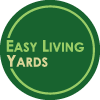
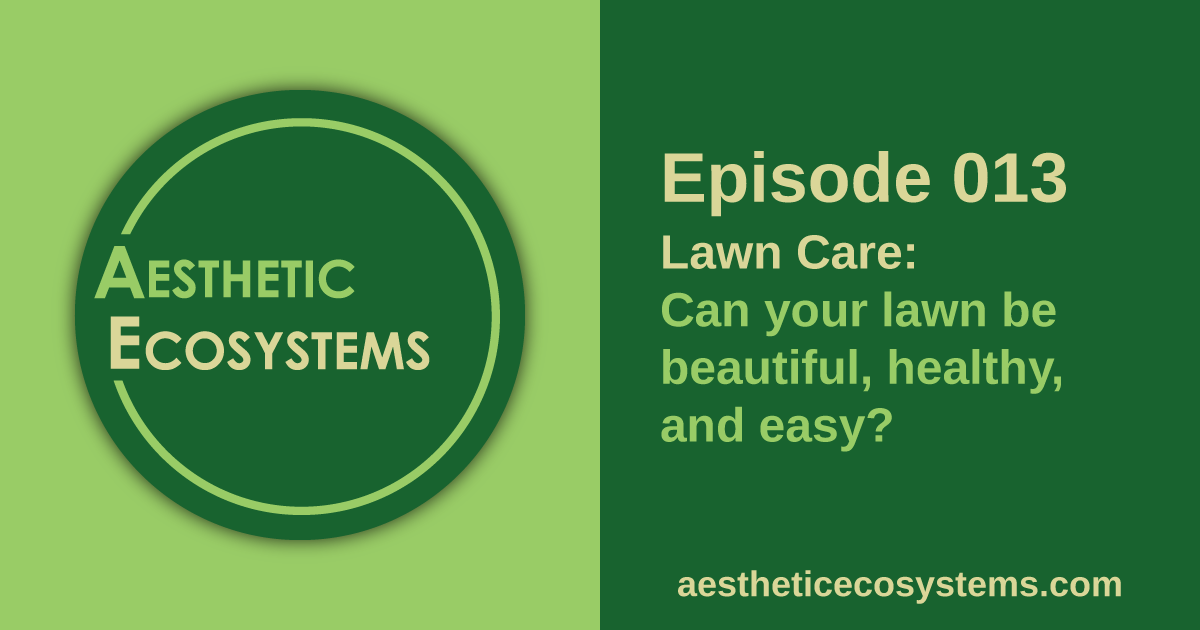
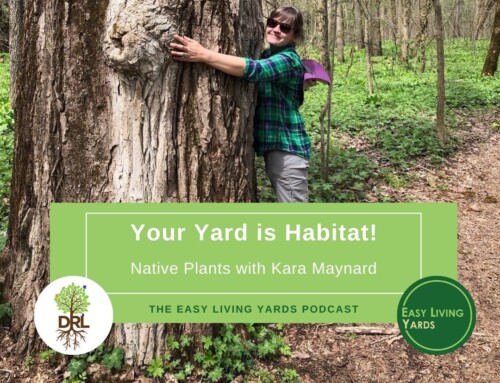

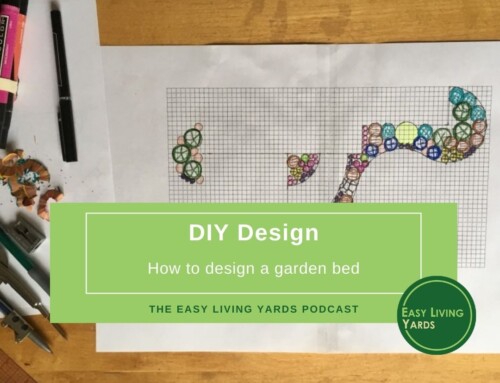

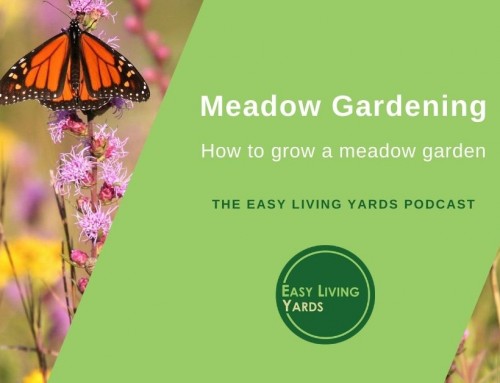
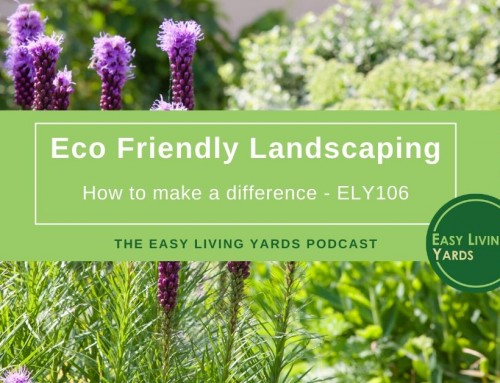
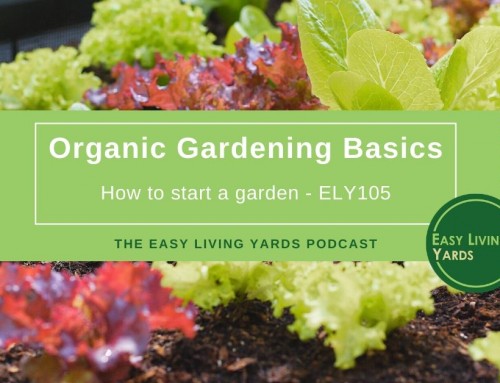
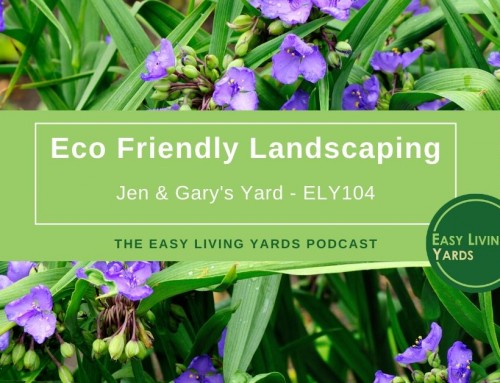
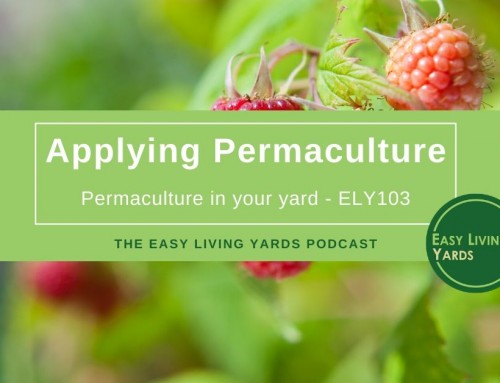
Leave A Comment